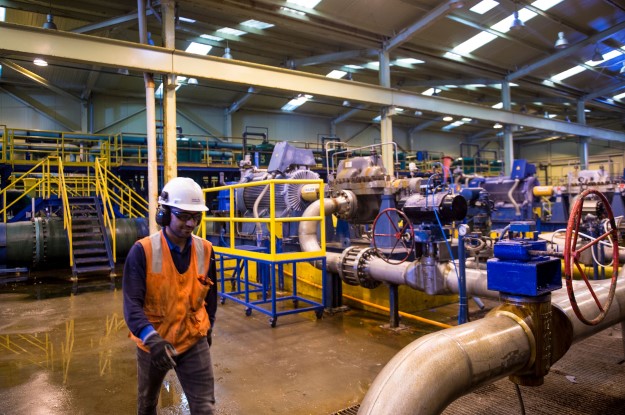This article is adapted from AQ’s latest issue on the politics of water in Latin America
From pollution to melting glaciers, Latin America faces a water crisis on multiple fronts. Several cases, however, show how companies are using innovation and technology to tackle problems head on – and in a sustainable way. Below, AQ editors look at where the region is becoming a pioneer on this issue.
A Second Life for Wastewater
by Cecilia Tornaghi
“We can stop looking at residual waters as waste and start looking at them as a resource,” said Daniel Nolasco, president of the International Water Association.
Nolasco should know. The engineer has been working on solutions for dealing with wastewater for over two decades, sharing his expertise everywhere from the World Bank to the Vatican.
“Our studies show that the concept of a circular economy (applied to water) can not only be good for the environment, but it can actually generate revenue,” Nolasco told AQ, sharing several examples.
In Monterrey, Mexico’s second largest city, the local utility eliminates some 90% of contaminants, and the treated water is then sold to 117 companies, including giants like Ternium and Pemex, for use in their operations. Also in Mexico, Hidalgo state’s newly built Atotonilco, the largest wastewater treatment plant in Latin America, can treat 35,000 liters per second and promises to help improve Mexico’s largest agricultural district, the Mezquital Valley, reversing a history of irrigation by untreated water from the metropolis sewage systems and contaminated storm waters.
In São Paulo, the utility Sabesp and Brookfields’ BRK Ambiental are partners in Aquapolo, a project that sends treated water to a petrochemical hub — a sustainable solution for both sides, as the water’s users stop tapping the city’s drinking water supply for its production. In Santiago, Chile — the first capital in Latin America to treat 100% of its wastewater — the utility Aguas Andinas was also the first water utility in the world to produce biogas, creating enough energy to support 100,000 residents served by the Metrogas system.
“We can transform something that seems to be a problem into something of value,” said Nolasco. “All we need is strategy and planning.”
Solar Solutions
by Ben Miller
Plans to build Latin America’s largest desalination plant in Chile’s Atacama Desert region show a sustainable path to addressing the region’s water crisis: It will be entirely solar-powered. When finished, the Energy and Waters of the Pacific (ENAPAC) will process 2,630 liters of water every second. Energy can comprise up to 55% of traditional desalination budgets, while solar power is virtually free to generate. The project, which authorities gave the green light in 2018, has attracted hundreds of millions of dollars in foreign investment and aims to relieve the industrial burden on fresh water sources used by surrounding communities.
Arid conditions in the Atacama pushed the region to become a global pioneer in desalination. A once simple process of removing salt from water through distillation has given rise to advanced methods like reverse osmosis, which will allow ENAPAC to sustainably convert salty ocean water into fresh water.
The water processed by ENAPAC is intended for industrial rather than human consumption. As rising sea levels encroach on coastal areas, the question of sustainable desalination as a solution to dwindling water resources looms large. If mining investment can bring fresh water to one of the world’s most arid regions, will Chile’s metropolitan areas benefit from the same technology? As a renewable alternative to an energy-intensive process, ENAPAC could provide a new Chilean Model for desalination that neighbors could adopt to tackle water stress throughout the region.







